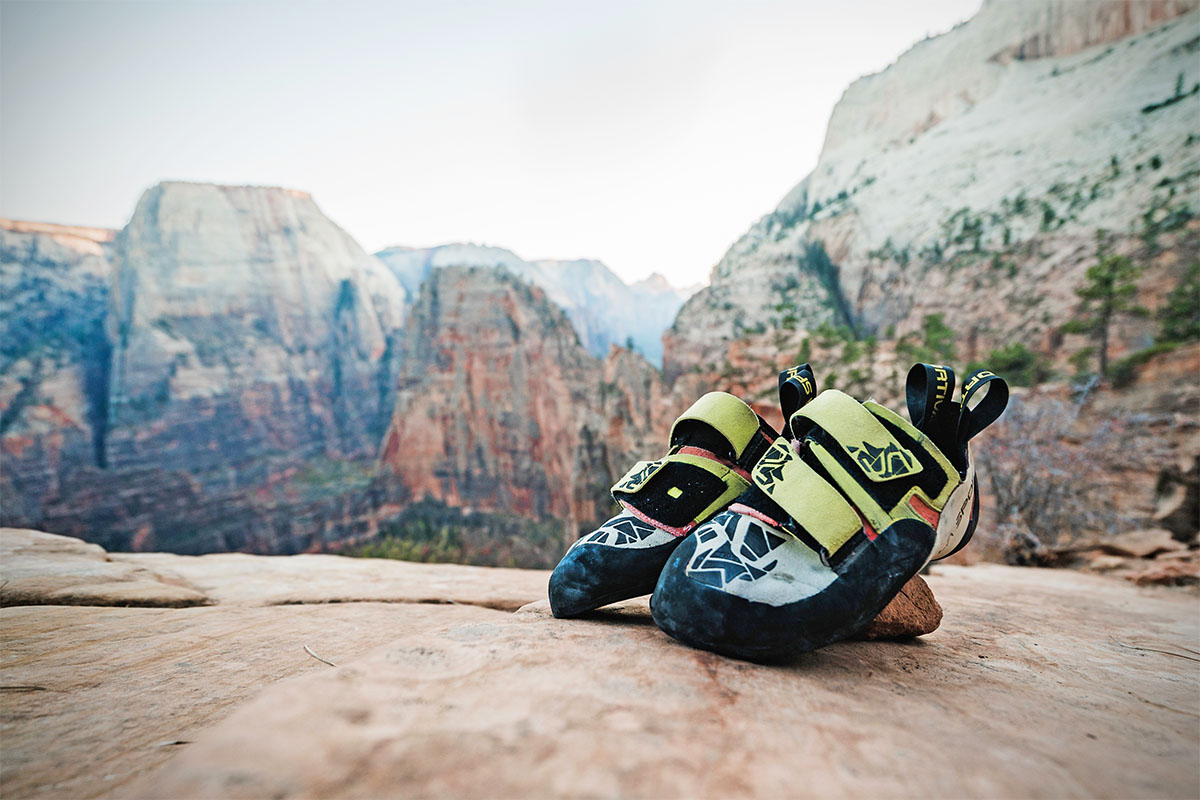
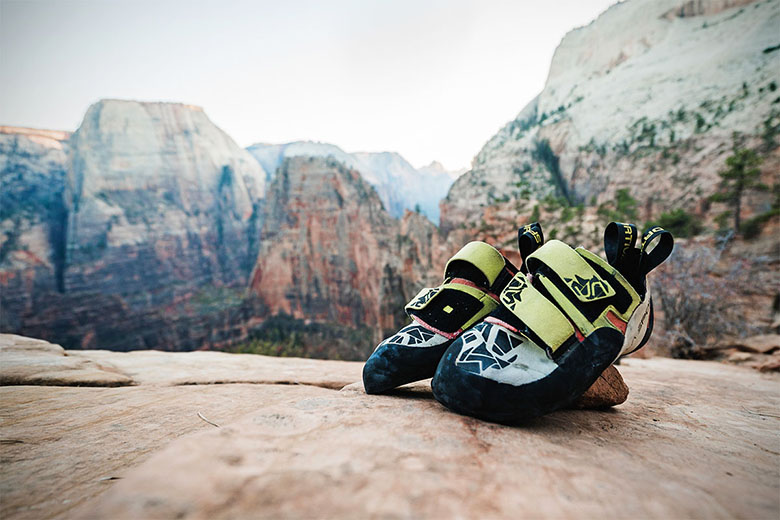
Forget the pull-ups and hangboard workouts: If you’re a new climber, your footwork is likely the biggest barrier between you and the higher grades. Good technique is a must, but your choice of climbing shoes is a large part of the equation. From flat-lasted, comfort-first models to aggressive bouldering slippers, there’s a perfect fit for every climber. We've been testing shoes all over the world for over 15 years and have racked up a good deal of knowledge on how to find the best climbing kicks along the way. Below we break down how to select the right climbing shoe, with details on best uses, closures, downturn, stiffness, fit, and more. For our top picks, see our articles on the best rock climbing shoes and the best climbing shoes for beginners.
Editor's note: This article was updated on August 1, 2024, to revise some of our product recommendations, add some advice, and ensure all information—including product specifications and prices—were correct at the time of publishing.
When people ask us to recommend a climbing shoe, the first question we respond with is: "What kind of climbing do you do?" Rock climbing is a fairly broad discipline, and a shoe that's ideal for the gym won't suit you for the tall, rocky peaks of Alaska or Patagonia. Below we detail the four main styles of climbing—gym climbing, bouldering, sport climbing, and trad climbing—and provide our take on what to look for to get the best shoe for the job. If some of the lingo doesn't make sense to you (not everyone knows what a downturn or last is), your answers should be found throughout the rest of the article below.
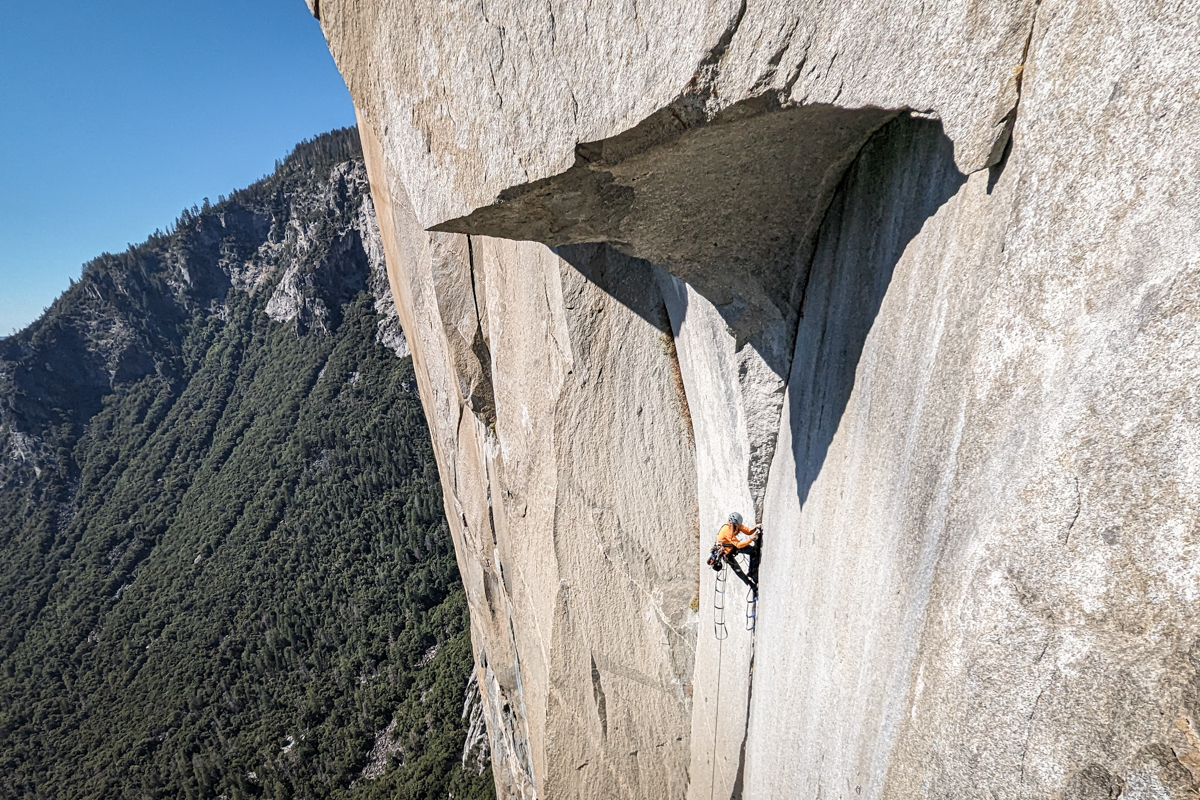
Gym Climbing
Gym climbing is the least particular style of climbing. In general, the holds are large (especially compared to outdoor slab), and the routes are quite safe, meaning you aren’t looking at big falls above bolts or dangerous rock features. Thus, climbers who spend most of their time indoors will want to prioritize comfort, easy on-and-off, durability, and affordability. Beginners should size their shoes generously and opt for a Velcro closure or slipper with a moderate or flat last, durable rubber, and a relatively stiff build (the Butora Endeavor is a great example). If the gym is a means to an end for you (i.e., if you’re simply training for outdoor climbing), it can even be a good idea to get a used pair of shoes to serve as your dedicated gym workhorse. For a slightly more aggressive shoe for general gym use and overhanging routes, we've really been loving Scarpa's Veloce. It's a bit more expensive than some like to pay for gym shoes, but works great as a lightweight, performance-oriented kick for those tricky plastic projects.
.jpg)
Bouldering
Bouldering is all about cramming as much strength, energy, and precision into a few quick moves as humanly possible. The right shoes for the job shine on steep terrain for toe hooking, heel hooking, and sticking to tiny incuts on overhanging walls. Look for an aggressive downturn (think banana shape), generous rubber patch at the toe, soft construction for sensitivity and flexibility, rounded heel cup, and a Velcro closure (slippers are a very popular choice). All that said, if you’re new to bouldering, it’s a good idea to save your money and foot ligaments and start with a stiffer and less aggressive model like the Scarpa Origin. You can graduate to something softer and more aggressive like Scarpa's Instinct VS once your technique improves and your feet get stronger, but for V2 and under (up to V4 in the gym), an entry-level climbing shoe is more than sufficient.
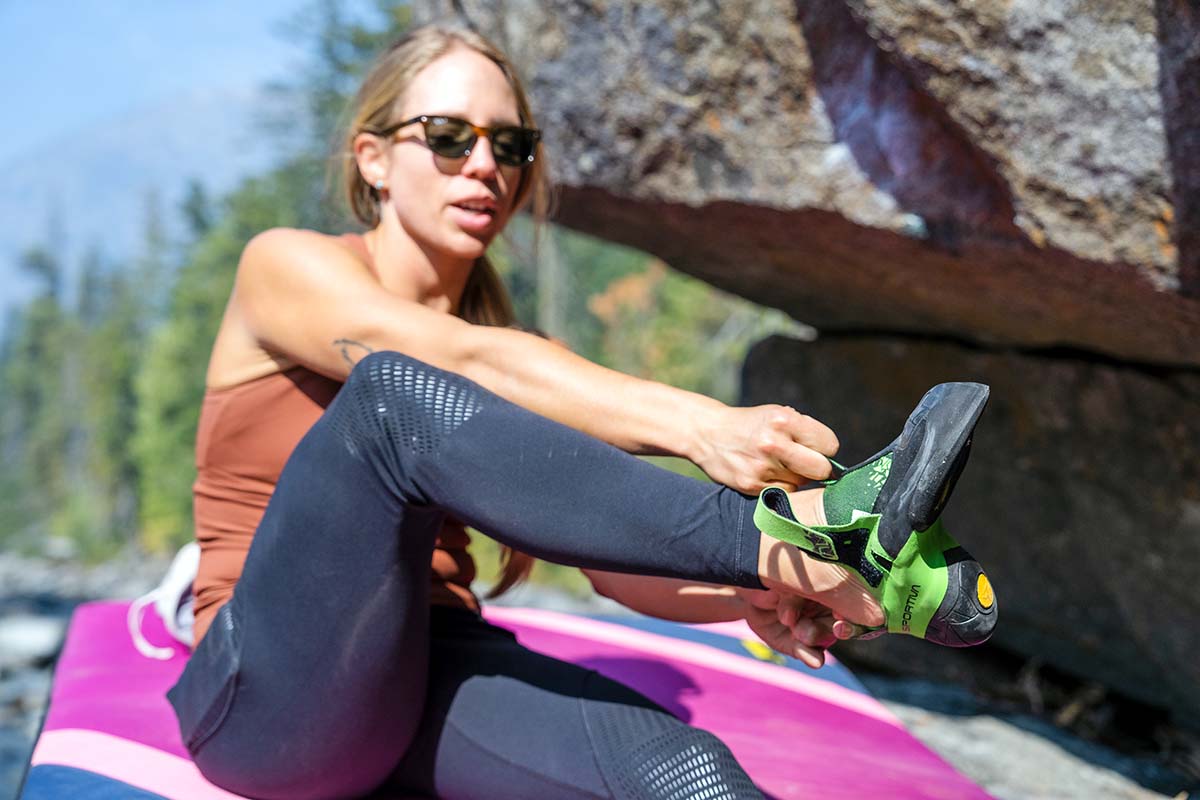
Sport Climbing
Sport climbing can run the gamut from overhanging, “bouldery” routes to vertical edging and technical slab. In general, the steepness of the climbing will determine the style of shoe that’s best for you. For example, for the overhanging limestone climbing in Greece, most climbers prefer soft and aggressive shoes similar to those used for bouldering, with generous patches of rubber on the heel and toe. For the more vertical, thin faces you find somewhere like Smith Rock, a stiffer, more moderately downturned shoe like the La Sportiva Katana Lace will do the job. These shoes are characterized by a solid edging platform, tight heel cup with slingshot rand, moderately stiff midsole, and either a lace-up or Velcro closure.
.jpg)
Trad Climbing
Traditional climbing shoes lose a little bit of performance, but the tradeoff in comfort is worth it for long days on the wall—even single-pitch trad climbs typically last longer than sport routes. Additionally, the terrain you’re tackling is almost always less steep. Here’s what to look for: very little or no downturn at all, a stiff midsole, less heel/toe rubber, good ankle protection, and a lace-up closure. Make sure you size your shoe for comfort and the potential for foot swelling, which is common after all-day endeavors. And for the rigors of crack climbing, we recommend an ankle-height model with generous protection and padding, such as the La Sportiva TC Pro. The TC Pro's are our absolute favorites for any sort of trad climbing. From single-pitch endeavors to full-on big wall battles, their ability to shine in cracks and on thin faces makes them versatile all-rounders. We also find ourselves slipping into the La Sportiva Katana Lace frequently for trad climbs, particularly those with a wide variety of face and crack climbing, or slightly overhanging sections.
.jpg)
One of the most discernible differences between climbing shoes is the type of closure they use: lace-up, Velcro, or slipper (which often has one piece of Velcro near the ankle). This can tell you a lot about the shoe’s strengths and weaknesses, including the style(s) of climbing it’s best for, so it is helpful to pin down your closure preference right off the bat. This way, you can begin narrowing down your options quickly.
Lace-Up
Lace-up shoes are a favorite among sport, traditional (trad), and multi-pitch climbers who put their shoes on and keep them on. Because of the ability to adjust the laces, lace-ups offer the most precise fit and can accommodate a wide range of foot shapes. Lace-up shoes run the gamut from flat to aggressive and stiff to soft (compare the La Sportiva TC Pro with the Testarossa), meaning they can be used for most styles of roped climbing. They’re also our top choice for crack climbing, as Velcro is bulkier and can come undone when jamming. However, we don’t recommend lace-ups for bouldering or gym climbing, as they’re tedious to take off between burns, and you’ll want a larger rubber toe patch for hooking on the steep stuff.
.jpg)
Velcro
Many climbers prefer shoes with Velcro closures because they’re easy to put on and remove. This makes them ideal for gym climbing and bouldering when you’re often relieving your feet between pitches or problems. Velcro shoes can also be a great choice for technical sport and trad routes (the La Sportiva Skwama, for example) or as an all-day workhorse. However, with less adjustability than laces, there are often limits to how well they fit, and Velcro tends to fail quicker than laces. A Velcro closure can get in the way of toe hooking, too, so for overhanging bouldering and sport climbing, we’d rather have a slipper (explained below) with a large patch of rubber on top of the toe. Finally, as we mentioned above, Velcro can easily come undone during repetitive foot jamming in cracks.
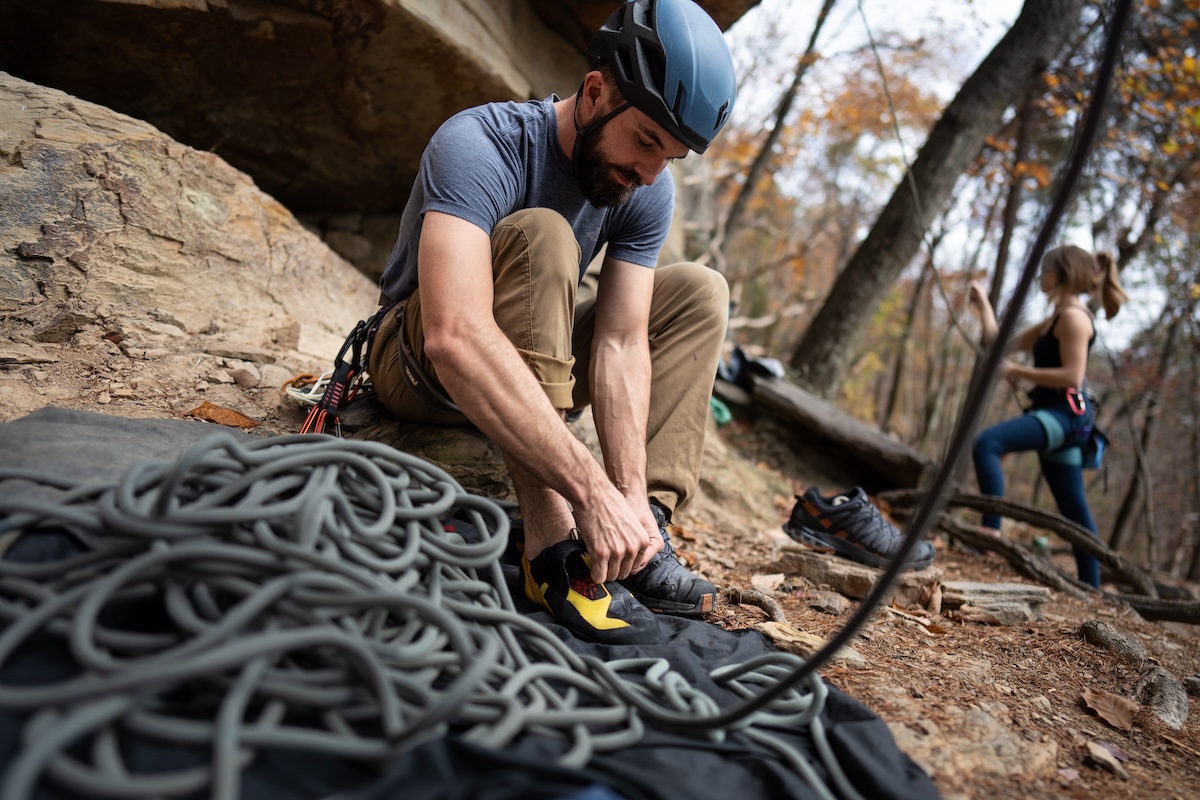
Slipper
In the past, slippers were mainly associated with trad climbing but have sharply declined in popularity. Instead, modern slippers are now the top choice for many gym-goers, boulderers, and sport climbers. These newer models are characterized by an aggressive downturn, uber-soft construction, a single Velcro strap near the ankle, and large patches of toe and heel rubber. Models like the La Sportiva Solution and Scarpa Instinct VS are wildly popular for the steep climbing found at many sport and bouldering areas. However, we don’t recommend slippers for less-than-vertical climbing or all-day routes.
.jpg)
The next order of business is choosing a last, otherwise known as downturn. Climbing shoes range from flat to aggressive, and this indicates the angle of climbing at which they excel. In general, aggressive shoes perform well on steep rock, moderately downturned shoes are great for vertical terrain, and flat shoes shine on less-than-vertical slab and in cracks. Shoes with a gentle (or no) downturn allow your feet to lie flat and are generally the most comfortable of the bunch. But the more aggressive the downturn, the more power your toes have to pull and perch on small edges. The main takeaway: Be sure to first asses what type(s) of terrain you’ll be climbing most often, and then choose the amount of downturn accordingly.
.jpg)
Stiffness is largely dictated by two things: the amount of support provided in the midfoot and the type of rubber used on the sole (we discuss rubber more in-depth below). This often corresponds with a shoe’s downturn: A flat-lasted shoe is typically stiff and supportive (the TC Pro), while an aggressively downturned shoe will be softer and more flexible (the Five Ten Hiangle). Stiff shoes are great for climbers just getting into the sport, as they offer more support for the foot and more power on small edges. A soft shoe, on the other hand, requires your foot to do a lot more work to support itself. However, soft shoes also allow you to toe-in better on steep routes and feel the holds underfoot.
In the end, whether you prefer a stiff or soft shoe comes down to personal preference. Sport climbers or boulderers who are used to soft shoes and close contact with the rock will have a difficult time switching over to stiffer trad shoes, and vice versa. Even the pros like to stick with what they’re used to: Babsi Zangerl, who began climbing as a boulderer, likes to wear the uber-soft La Sportiva Skwama while climbing El Capitan in Yosemite National Park, while Alex Honnold (a big wall climber through and through) prefers the stiff TC Pros for the same style of climbing. In short, the best shoe is the one that gives you the most confidence—whether that means flexibility and sensitivity or stiffness and support.
.jpg)
Climbing shoes are made of leather, a synthetic leather substitute, or a combination of the two materials. All constructions have their strengths and weaknesses, including differences in odor retention, durability, breathability, and stretch. As a rule of thumb, you can expect leather shoes to breathe better than synthetic models, which is great news for those with particularly sweaty feet. Further, they generally last longer (especially noticeable if you’re shoving your feet into cracks) and resist odor better than shoes with synthetic uppers.
However, the most notable difference between leather and synthetic is that leather stretches and synthetic does not. This means that leather shoes can take on a glove-like fit, resulting in increased comfort and performance over time. However, it also means that leather shoes have the ability to lose their shape, becoming baggy or beat-out. Whether you opt for a leather or synthetic shoe, the main takeaway here is to size appropriately: A leather shoe should fit tightly to allow for stretch, while a synthetic shoe should feel just-right out of the box. For the best of both worlds, many leather shoes now incorporate a synthetic liner, which means you get a close fit with less risk of the shoe stretching over time.
.jpg)
Climbers love to talk about rubber. The topic is surprisingly complex, there are an overwhelming number of options to choose from, and many climbers are very opinionated on the topic. But here’s the good news: As a beginner, rubber is one of the least consequential decisions you’ll make. In the end, it doesn’t matter if you opt for Vibram XS Grip or Edge, Stealth Mi6 or C4, or Trax SAS or XE—for the level of performance you need, they’ll all do the trick.
As you start climbing the grades (literally) and getting more into the nitty gritty, there are two main considerations to factor in: the type of rubber and the thickness of the rubber. As we touched on above, some rubber compounds are softer and stickier (Vibram XS Grip 2), while others are stiffer and more durable (Vibram XS Edge). The former is great for the demands of steep climbing, while the latter is better for edging, slab, or as a durable option for the gym or crag. Each shoe manufacturer uses their own blend of rubber (sometimes proprietary, sometimes not), and you’ll want to do research to find out where these lie on the soft-to-stiff spectrum (Gripped Magazine published a helpful article on the topic). Finally, rubber comes in various thicknesses, which also contributes to the sensitivity and durability of your shoe. For most beginner climbers who are still honing in footwork, we recommend a more hardwearing (stiffer) rubber that measures at least 4 millimeters in thickness.
.jpg)
Once you’ve chosen your shoe, you’re now faced with arguably the most important decision of all: selecting the right size. A common misconception is that you need to aggressively size down and stuff your feet into too-small shoes until your toes curl and your nails fall off, but we’re here to tell you that this simply is not the case. If you’re new to climbing, we encourage you to start with a shoe that allows your feet to lie relatively flat and work your way to a more aggressive fit. You can squeeze some added performance out of a tighter-fitting shoe, but this will only come in handy once you have some experience under your belt.
Should you decide to opt for a tight fit, here are a few pointers. First, as we mentioned above, keep in mind that leather shoes (especially unlined leather) will generally stretch about a full size. This means that you’ll want your leather shoes to be uncomfortably tight at first. Synthetic models, on the other hand, should fit fairly well out of the box. Second, the softer the shoe, the easier the break-in period will be. Ultra-stiff shoes like the TC Pro can be a bear to break in, while a shoe like the soft and synthetic Skwama will likely feel comfortable right out of the box. And third: if you're climbing long routes or in the heat, keep in mind that your feet will swell throughout the day. Regardless of what you choose, we recommend breaking in your shoes on inconsequential terrain, such as at the gym, while top-roping, or on your warm-up routes.
.jpg)
To put it simply, gender matters very little when buying climbing shoes. However, there are some important distinctions to point out between men’s and women’s models. In general, men’s shoes tend to be wider in the forefoot and heel, and the fabric of the upper often rides a bit higher. Women’s versions, on the other hand, take the opposite approach: they’re often made with softer rubber and materials (for example, the men’s Miura VS is made with Vibram XS Edge rubber, and the women’s version is made with softer XS Grip 2). Companies like Butora keep it simple by offering different fits without the gender labels. The Butora Acro, for instance, comes in wide and tight variations. All that said, many male climbers prefer women’s shoes and vice versa—it all comes down to personal preferences on stiffness and fit.
Resoling is just what it sounds like: Specialty shops take your worn climbing shoes and add a new outsole to make them good-as-new. Resoling should occur as soon as you start to break through the sole of your shoes—this usually happens at the tip of the shoe, right under the big toe. You’ll start to see the rubber get thin right where it meets the upper, which is a good sign that it’s time to stop using your shoes and send them in or bring them to a local shop. If you wear the shoes until you develop a true puncture and can see fabric or materials that are not rubber, you’ll have to pay for a toe cap as well as a resole, which can cost you more to fix per shoe.
.jpg)
In our opinion, resoling is worth it—the service could run you anywhere from $60 to $105, but a brand-new pair of shoes can cost upwards of $200. The main downside: It can be hard to find a resoler without an exceptionally long turnaround time (Rock and Resole in Boulder, CO, for example, takes around 6-8 weeks generally). Our best advice is to plan ahead—or, better yet, use the wait time as an opportunity to add another shoe to your quiver.
Each climbing shoe manufacturer has its own style, branding strategy, affiliated athletes, claims to fame, and pitfalls. So how do you decide which brand is right for you? The best way is to figure out which company’s shoes fit your foot best, which will require going to your local gear shop and trying on a few pairs. But in case you want a little more background info, we’ve made the following list of the most prominent climbing shoe manufacturers to try and capture the essence and ethos of each company (in alphabetical order). Of course, all opinions are strictly our own.
Black Diamond: Black Diamond makes climbing shoes? Still quite a question mark—we’d wait a few years to let them iron out the kinks. Middle tier at best.
Boreal: These guys are still around? Spanish company. Fading. Bottom tier.
Butora: Korean manufacturer that’s quickly gaining in popularity. Super high-quality craftsmanship and design. Top tier.
Evolv: American-made. Affordable shoes for beginners, sport, and bouldering. Middle tier.
Five Ten: Industry pioneer now owned by Adidas. Trad, bouldering, sport. Top tier but quality seems to be on the decline.
La Sportiva: Italian. Industry pioneer. Trad, bouldering, sport. The standard for quality craftsmanship. Top of the top tier.
Mad Rock: Great budget option for beginners. Cost over quality, but not a bad balance. Top of the bottom tier.
Red Chili: German brand. They’ve been around a while but never made a real splash in the U.S. market. Middle tier.
Scarpa: Italian brand. Almost on the same level as La Sportiva. Quality craftsmanship and materials. Top tier.
Tenaya: Spanish brand that was purchased by Trango. Up-and-coming—keep an eye out for them. Upper-middle tier.
Unparallel: California brand based in the former Five Ten factory. Designed by the people for the people. New, but definitely a brand to watch. Top tier.
.jpg)
With over 15 years of climbing experience under our belt, we’ve had a chance to test many shoes on the market across numerous brands and price points. For the top overall shoes on the market, regardless of skill level, see our article on the best rock climbing shoes. We’ve also written a beginner-specific piece for those just getting into the sport, with less aggressive models at the forefront of our picks. Below are a few of our favorites broken down into key categories.
Best All-Around: La Sportiva Katana Lace
Best Budget/Beginner Shoe: La Sportiva Tarantulace
Best for Bouldering: Scarpa Instinct VS
Best for Granite and Crack Climbing: La Sportiva TC Pro
Best High-Performance Shoe for the Gym: Scarpa Drago
Best Overall: Butora Endeavor 2.0
Best Budget: La Sportiva Tarantulace
Best for Trad Climbing: La Sportiva Mythos Eco
Best for Gym Climbing: La Sportiva Kubo
Best for Bouldering: Evolv Defy
See Our Top Climbing Shoe Picks See Our Top Climbing Shoes For Beginners